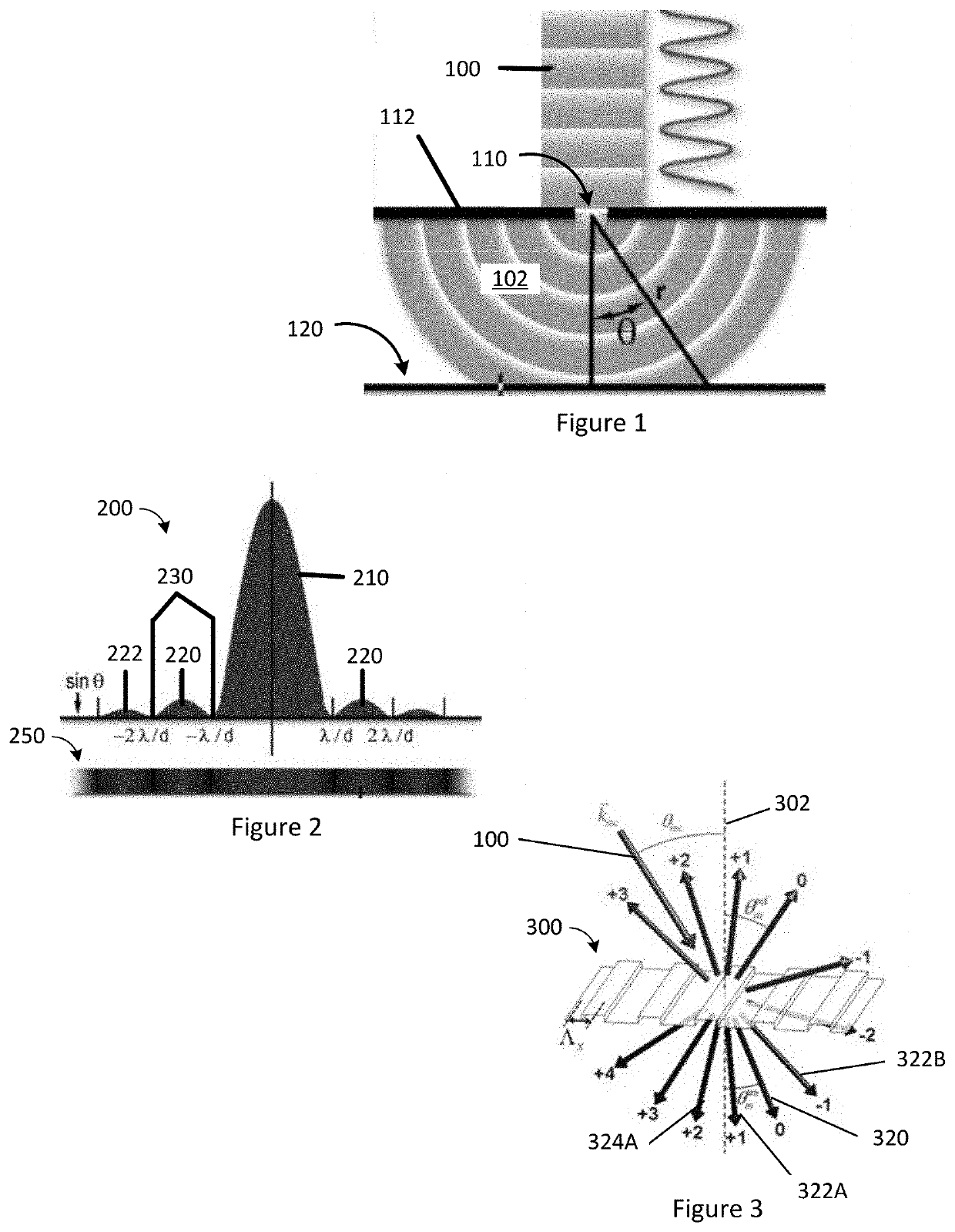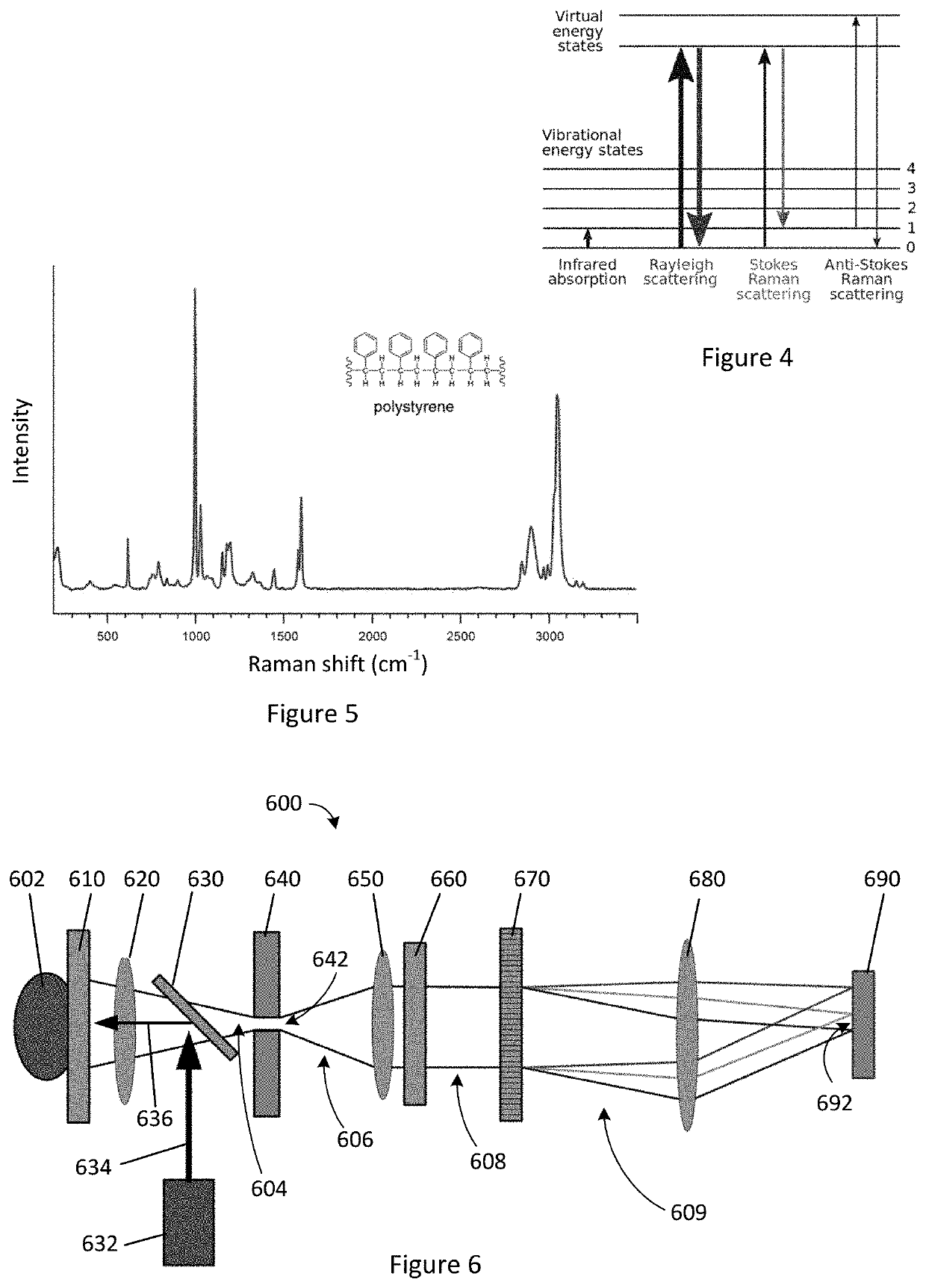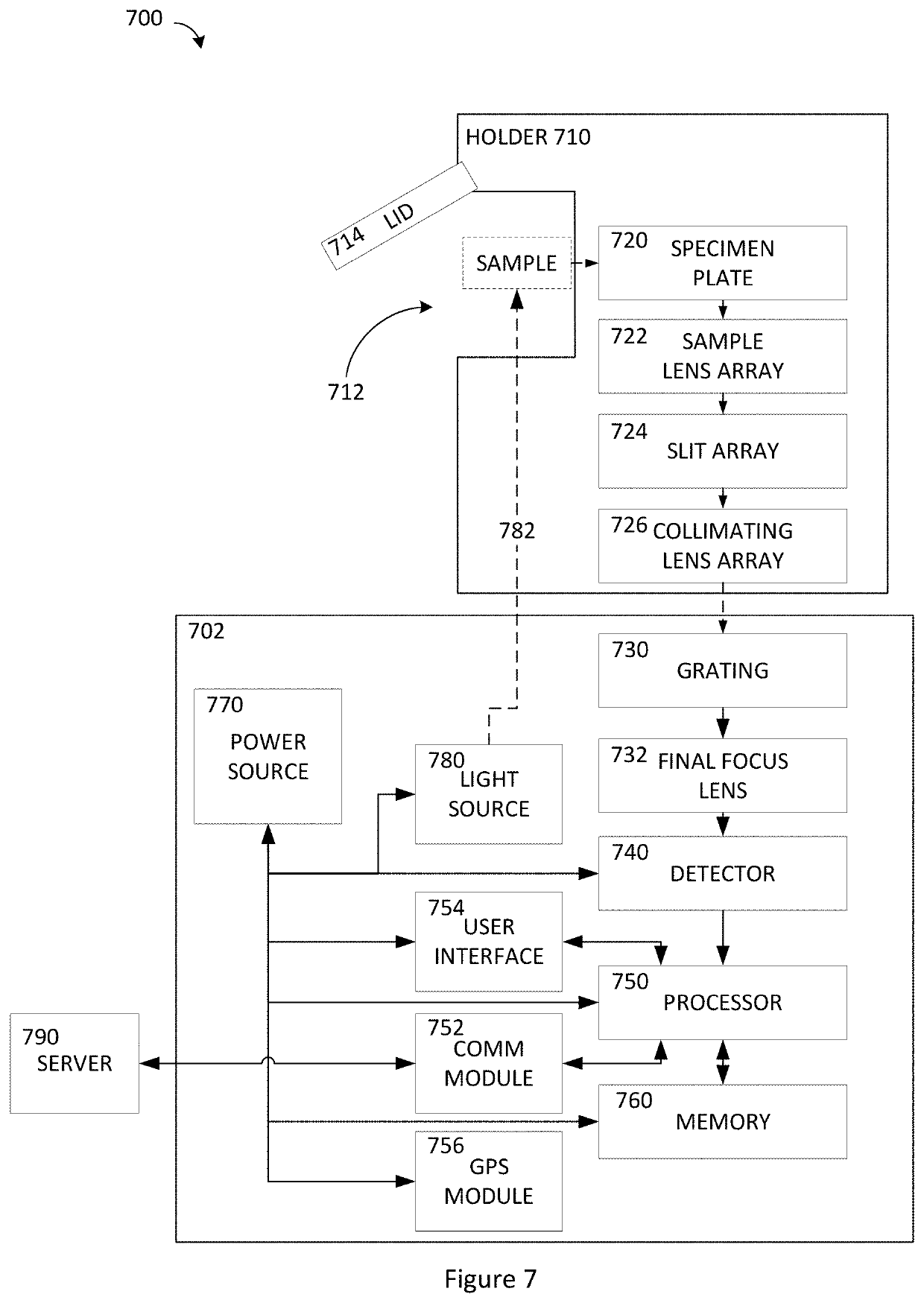Sample identification
a sample and identification technology, applied in the field of sample identification, can solve the problems of limited field of view, shallow depth of field (dof), significant signal loss, etc., and achieve the effects of reducing cross-contamination, and reducing the number of samples
- Summary
- Abstract
- Description
- Claims
- Application Information
AI Technical Summary
Benefits of technology
Problems solved by technology
Method used
Image
Examples
embodiments
[0135]A1. An apparatus for analysis of a sample, comprising: a frame having a first axis; a sample holder coupled to the frame and disposed on the first axis; a transmissive diffraction grating coupled to the frame and disposed along the first axis such that light traveling along the first axis from the sample holder passes through the grating in a first direction; and a source coupled to the frame and configured to emit a first light to pass through the grating in a second direction that is opposite the first direction.
[0136]A2. The apparatus of A1, further comprising: a lens coupled to the frame; and a spatial filter coupled to the frame; wherein the lens and spatial filter are disposed along the first optical axis.
[0137]A3. The apparatus of A1, wherein a portion of the first light emitted by the source is diffracted by the grating to travel parallel to the first optical axis.
[0138]A4. The apparatus of A3, wherein: the light emitted by the source is monochromatic; the diffracted p...
PUM
| Property | Measurement | Unit |
|---|---|---|
| wavelength | aaaaa | aaaaa |
| Raman | aaaaa | aaaaa |
| first wavelength | aaaaa | aaaaa |
Abstract
Description
Claims
Application Information
 Login to View More
Login to View More - R&D
- Intellectual Property
- Life Sciences
- Materials
- Tech Scout
- Unparalleled Data Quality
- Higher Quality Content
- 60% Fewer Hallucinations
Browse by: Latest US Patents, China's latest patents, Technical Efficacy Thesaurus, Application Domain, Technology Topic, Popular Technical Reports.
© 2025 PatSnap. All rights reserved.Legal|Privacy policy|Modern Slavery Act Transparency Statement|Sitemap|About US| Contact US: help@patsnap.com



